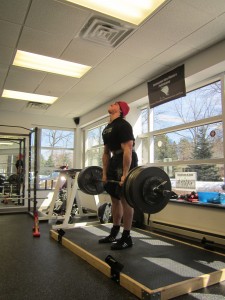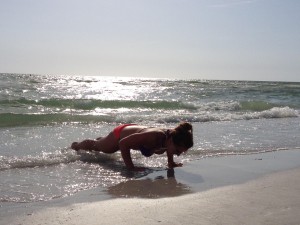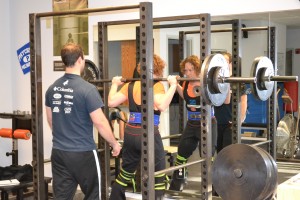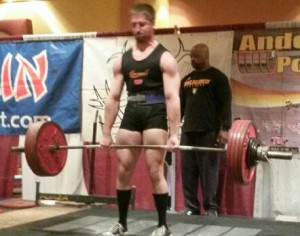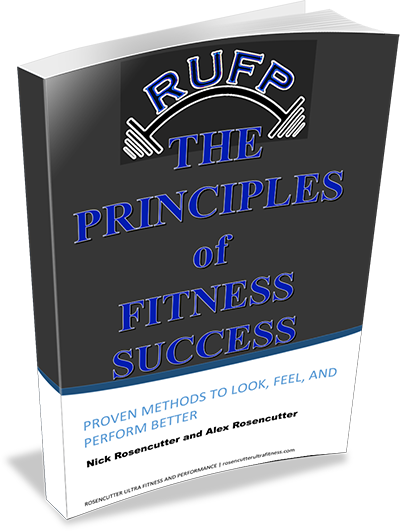In Season Training Tips
Don’t let this be you
Its that time of year when football and volleyball season are in full effect and basketball and wrestling are just around the corner. While (hopefully) many athletes spent plenty of time training during the off season to showcase their optimal performance on the field or court this season, a lot of people get stuck when the season starts. Once practice, games and tournaments start, time in the weight room seems to go right out the window. Many of the strength and power gains that were developed all off season start to fade away and performance suffers. While athletes should not spend too much time in the weight room and definitely should not do many extremely taxing workouts during a competitive season, there definitely should still be something getting done. Its all about finding a healthy balance to the equation. Its all about looking at the overall stress that is put on the athlete’s system and making sure that it stays in a positive and healthy range.
In Season Training Rule 1:
Don’t try to make crazy improvements in the weight room during this time.
With all of the stress going through the system with multiple practices and games every week, there is not going to be tons of reserve left to fuel strength gains in season like there is in the off season when it is the top priority. Doing enough quality work to maintain the gains that were made during the off season and prevent injury should be the top priority during this time. If you are trying to go all out with lifting and conditioning at this time, you are going to burn yourself out for the times that you need to perform. This is not to say that some improvements can’t be made; it just won’t be extreme.
In Season Training Rule 2:
Pick 1 to 2 days to strength train.
If you are practicing and playing hard 4 to 6 days a week, you will not be lifting 4 days a week anymore. You need to pick one to two days where practice is lighter and spend 30 to 40 minutes in the weight room hitting the most important movements that are needed. For example, pick 2 big bang strength movements and pick 2 to 3 accessory and prehab exercises and get out and rest.
Example:
1. Front Squat
2. Floor Press
3. One leg rdl
4. Pullup
5. Half Kneeling band hold
6. Cobras
7. breathing drills
In Season Training Rule 3:
Pick one week per month to lift heavy
We can generally maintain max strength and power capabilities for up to 4 weeks (residuals) after ending specific training of these modalities (Issurin, Block Periodization). This means we will not lose our improved neural drive that we developed during the off season if we don’t train heavy for a few weeks. The trick is doing what is necessary to maintain this development. The answer is to do a microcycle once a month where we hit our main lifts hard and heavy. This will basically prolong the effects of our off season development rather than letting that wonderful force development capability fade away. The best week would be a week where you have an easier practice or game schedule. This would allow you to dedicate more energy towards getting your lifts in. You might be able to do this more often depending on your overall schedule and stress load. Using the exercises from before, the workout might look like this:
1. Front Squat 4×3-5 leaving 1 to 2 reps in the tank
2. Floor Press 4×3-5 leaving 1 to 2 reps in the tank
3. One leg rdl 3×8
4. Pullup 3×5
5. Half kneeling band hold 2×8
6. Cobras 2×12
7. breathing drills to get parasympathetic after all of the sympathetic stimulation from the season and the heavier lifting
In Season Training Rule 4:
Any extra conditioning work should be Aerobic.
While you probably don’t need to do extra conditioning work during a season as you are naturally getting PLENTY during practice and games, any that you might do should be strictly aerobic. Extra anaerobic work is way too taxing for your system and you are already getting more than enough with your sport. Trust me. Some extra low intensity aerobic work can actually help with recovery and help you perform better by balancing out the anaerobic workload that is already being given to your body. This will also help maintain the residuals of aerobic development from the off season (at least there should have been some) similar to the max strength week talked about earlier. Activity should be low intensity and generally continuous. Heart rate at 120-140, 20-30 minutes. An example would be:
1. Light airdyne bike
2. Light jump rope
3. Med ball tosses
4. Quick steps
5. Light kettlebell swings
The possibilities are pretty endless here as long as the intensity is low. Pick a lighter day of workload to do it.
In Season Training Rule 5:
Spend some time getting parasympathetic.
With the psychologically stressful nature of an intense season with competition, practices, games, etc. it is very easy to get pretty sympathetic, aka in fight or flight mode. Getting stuck in this state will lead to plenty of problems that we don’t want. When we step off of the field or court, we need to shift back towards our parasympathetic sides, aka rest and relax mode so that our body and mind can recover. Practicing breathing drills getting full inhalation through the nose and full exhalation through the mouth (BLOW all of your air and tension out) is a great and practical way to do this. Go home, lay down, put your feet up on a chair and breathe for 10 to 15 minutes if you can. At the very least, take 10 to 20 breaths to give your nervous system some kind of relief. A full body relaxation massage is also a great way to accomplish this goal. (I know someone who is decent at this 😉 Foam rolling and mobility work is also a good way to go.
While this is by no means an exhaustive list, it should give you some good tips to help fuel your in season training and keep you performing at an optimal level on the field or court. Get to it!
-Nick

